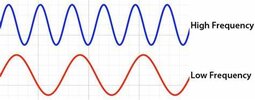He didn't claim it was, only that it was "not transmitting by RF"That is certainly not rf in TV terms.
If you don't think that 6 MHz qualifies as "RF", I wonder what you would call it? It's certainly above "AF" and "Ultrasound" frequencies, and certainly less than microwaves and all shorter wavelengths of EM radiation
In fact, as regards "RF in TV terms", I was brought up on (a small number of hours per day of) BBC on Band 1, Channel 1, which was broadcast on frequencies far less than an order of magnitude greater than 6 MHz (if I recall, audio on 41.5 MHz and video on 45 MHz - although, of course, they were Mc/s in those days!) - and I'm sure no-one would have argued that that was not "RF"
... and, of course, my earliest amateur radio activity was on the 1.8 - 2.0 Mc/s (or MHz) band - so wasn't that "RF", either?
Kind Regards, John


